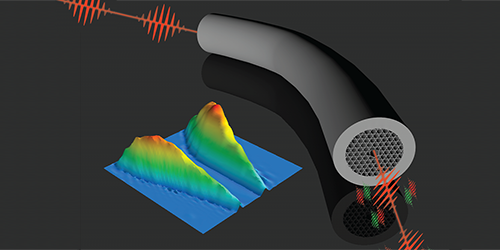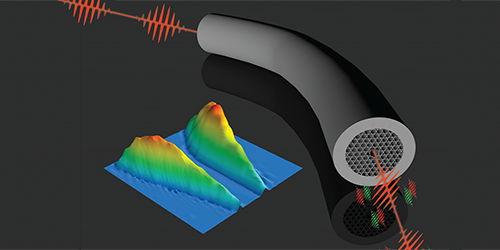Bright Twins
By exploiting quantum correlations between photons, scientists can generate light with exceptionally low noise. Such “squeezed noise” is observed, for example, in twin beams—pairs of beams carrying the exact same number of photons. By using one of the beams to probe a sample and the other as a reference, researchers can achieve measurement accuracies impossible with classical light. Martin Finger at the Max Planck Institute for the Science of Light, Germany, and colleagues have now demonstrated a fiber-based source of twin beams with record brightness.
Twin beams are typically produced in thin nonlinear optical crystals, which convert a laser photon into a “signal” and an “idler” photon. Since a signal photon is always generated with an idler photon, the photon number in the two beams is identical. Optical fibers could, in principle, replace crystals, realizing similar conversion processes over much longer lengths to create brighter twin beams. But certain light scattering processes, due to the so-called Raman effect, increase the twin beam’s noise as it propagates in a fiber.
Finger and co-workers overcome this problem using a crystal fiber with a hollow core filled with argon. Through a conversion process known as modulational instability, a propagating laser pulse modifies the fiber refractive index, generating two beams at frequencies slightly below and above the laser's wavelength. Since light propagates in a noble gas, rather than in the glass core of conventional fibers, it is immune from the Raman scattering processes that plague fiber-based schemes. The setup delivers a tunable and highly correlated twin beam with over 3 times the brightness of previous demonstrations.
This research is published in Physical Review Letters
–Matteo Rini





